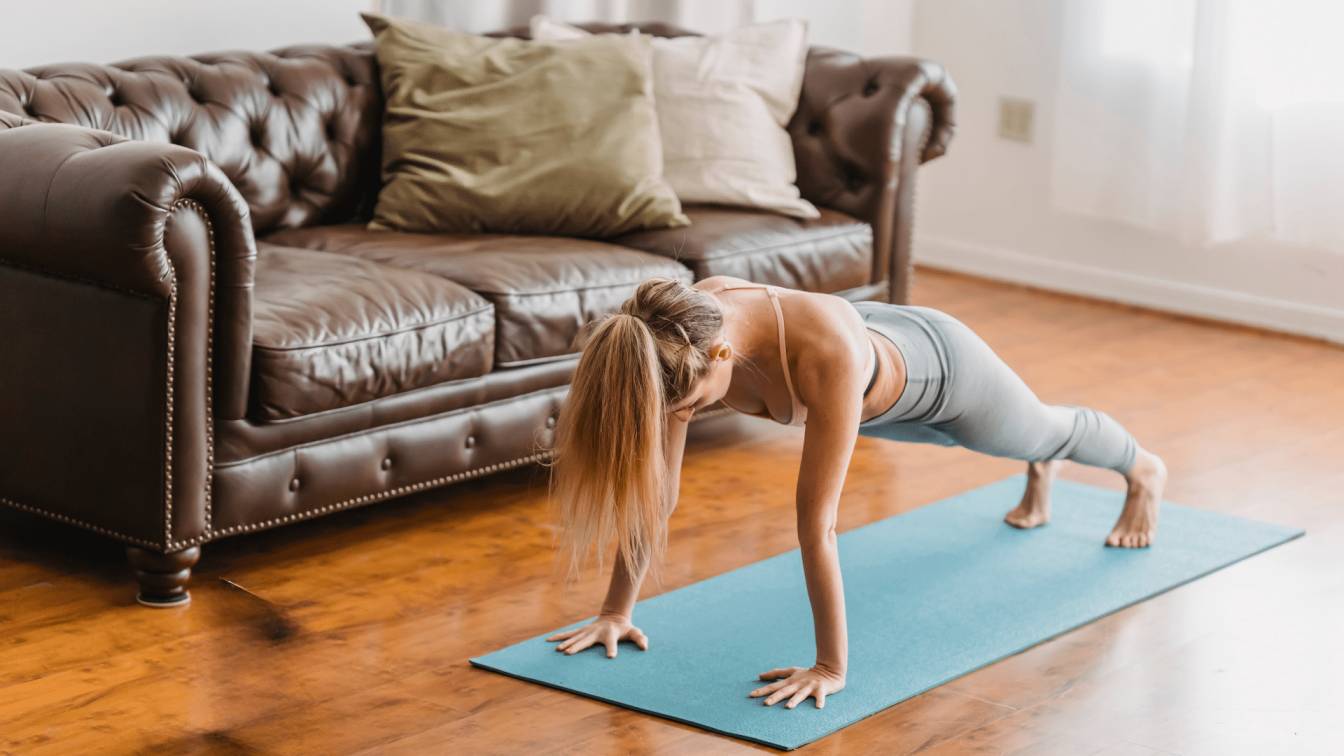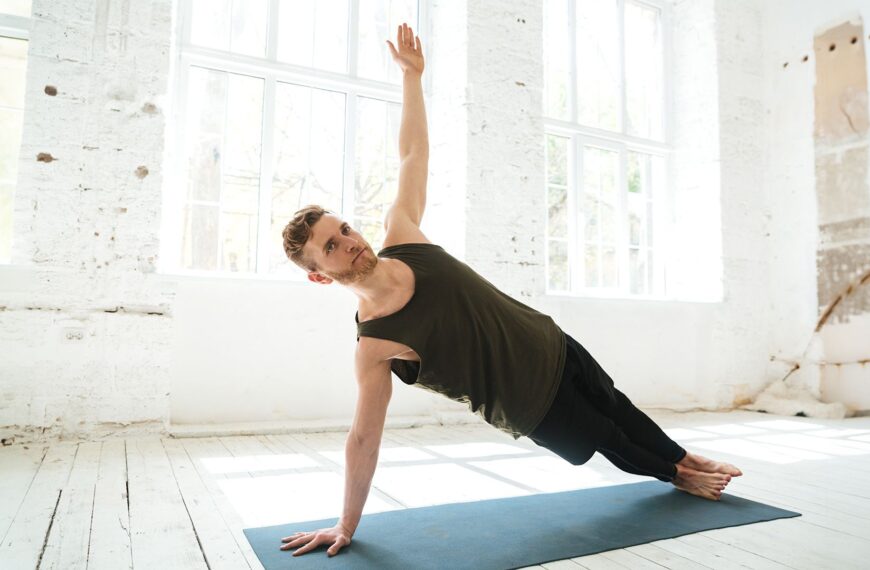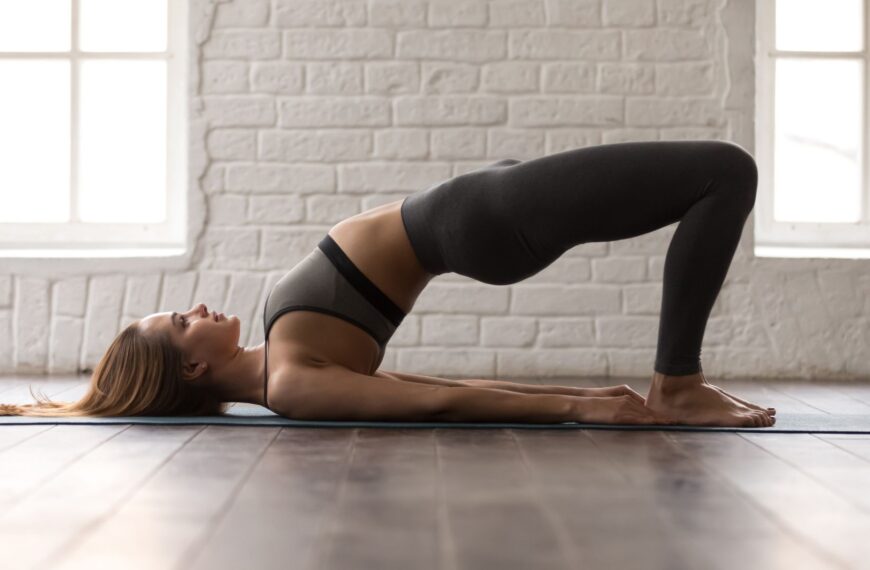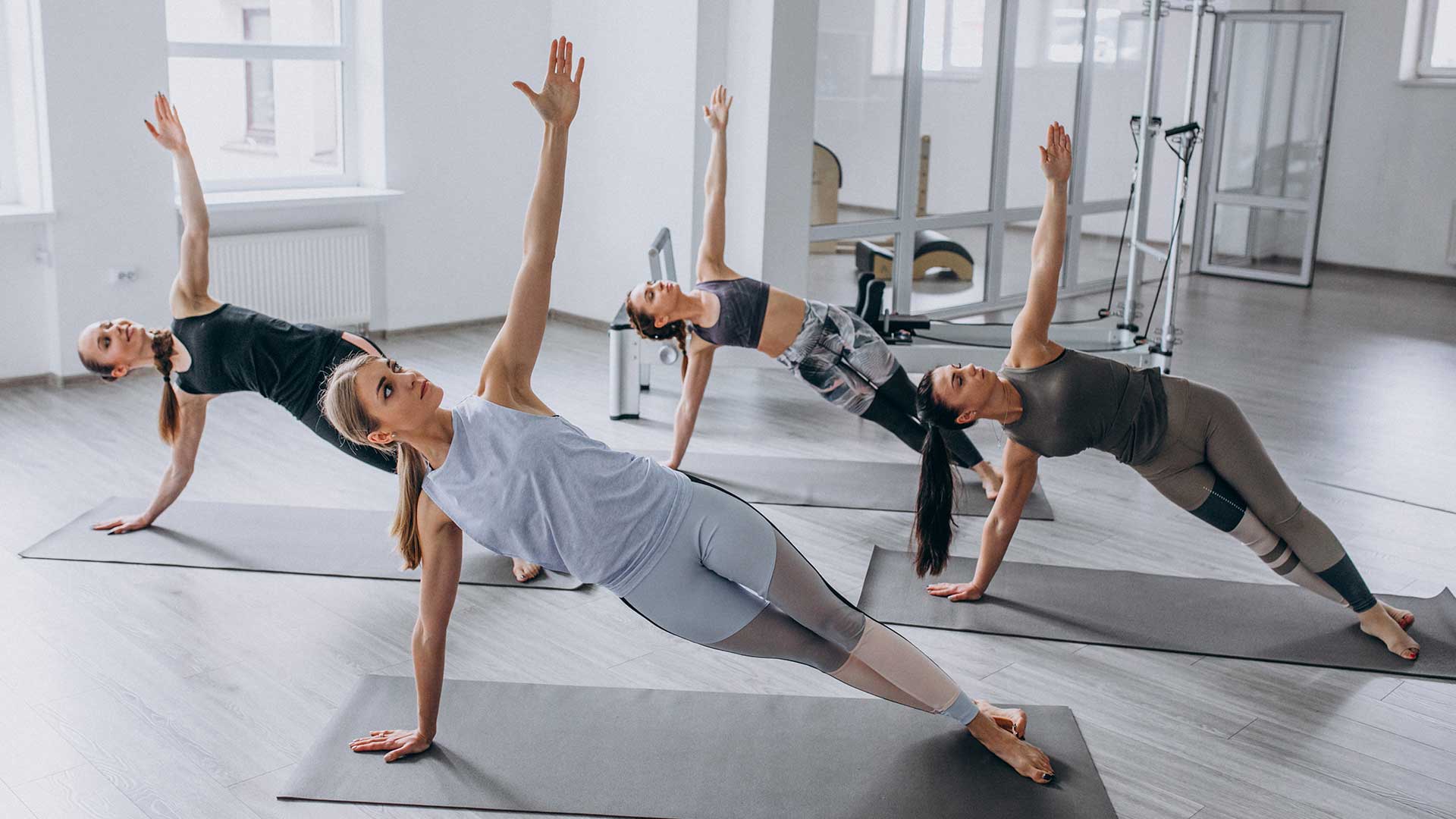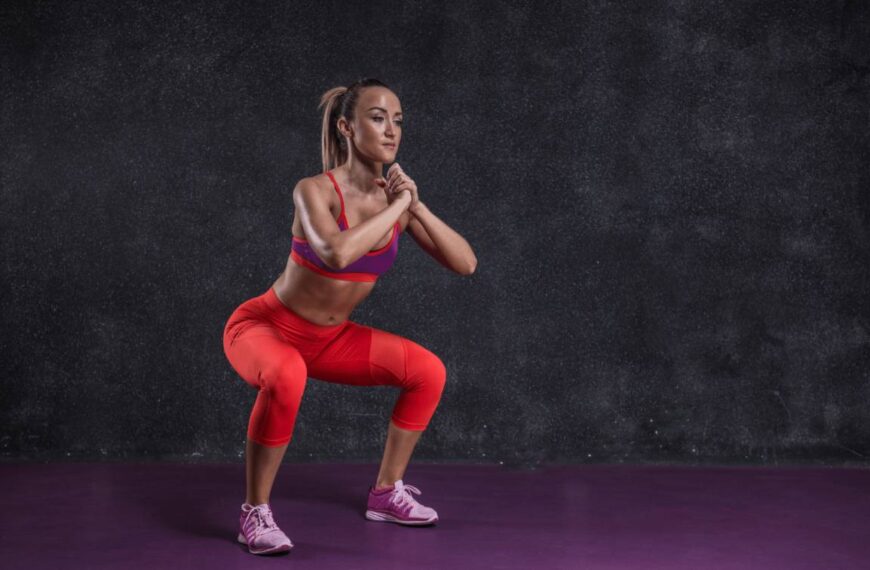Definition of Plank to Down Dog Exercise
The plank to downward dog is a yoga exercise that combines two popular poses: the plank and the downward dog. The plank is a static pose that targets the core, arms, and shoulders, while the downward dog is a dynamic pose that stretches the hamstrings, calves, and spine. By combining these two poses, you get a full-body workout that will challenge your strength, flexibility, and endurance.
Plank to Down Dog Exercise: Benefits and How to Perform
- Plank to Down Dog exercise is a yoga transition that involves moving from a plank position to a downward dog position.
- It improves core strength, increases flexibility, enhances endurance, and strengthens the upper body.
- The exercise can be modified and variations include modified plank to down dog, knee-to-elbow plank to down dog, and one-legged plank to down dog.
Benefits of Plank to Down Dog Exercise
The plank to downward dog exercise offers several benefits for your body and mind. Here are some of the most important:
-
- 1. Improves core strength: The plank to downward dog exercise engages your core muscles, including your abs, back, and hips. By holding the plank position, you’ll build endurance and stability, while the downward dog will stretch and strengthen your core muscles.
-
- 2. Increases flexibility: The downward dog is an excellent pose for stretching the hamstrings, calves, and spine, while the plank position targets the shoulders and chest. By transitioning smoothly between these two poses, you’ll increase your range of motion and improve your overall flexibility.
-
- 3. Enhances endurance: The plank to downward dog exercise is a challenging pose that requires both strength and stamina. By performing this exercise regularly, you’ll build endurance and improve your overall fitness level.
-
- 4. Strengthens upper body: The plank to downward dog exercise targets the arms, shoulders, and chest, helping to tone and strengthen these muscle groups.
How to Perform the Plank to Down Dog Exercise
Before you begin the plank to downward dog exercise, it’s essential to warm up your body with some light cardio and stretching. This will help you avoid injury and prepare your muscles for the workout ahead. Here’s a step-by-step guide to performing the plank to downward dog exercise:
Warm-up Exercises
-
- 1. Jumping jacks: This exercise is an excellent way to get your heart rate up and warm up your entire body. Start with your feet together and arms at your sides, then jump your feet out to the sides while raising your arms overhead. Jump back to the starting position and repeat for several reps.
-
- 2. Arm circles: This exercise targets your shoulders and helps to increase range of motion. Stand with your feet shoulder-width apart and extend your arms out to the sides. Slowly circle your arms forward for several reps, then circle them backward for the same number of reps.
-
- 3. Cat-cow stretch: This yoga pose is an excellent way to warm up your spine and stretch your back muscles. Start on your hands and knees with your wrists under your shoulders and your knees under your hips. Inhale and arch your back, lifting your head and tailbone towards the ceiling. Exhale and round your spine, tucking your chin to your chest and bringing your tailbone towards your knees. Repeat for several reps.
Modifications and Variations
If you’re new to the plank to downward dog exercise, or if you have any physical limitations, then you may want to try some of these modifications and variations:
-
- 1. Modified Plank to Down Dog: Instead of starting in a high plank position, begin on your hands and knees with your wrists under your shoulders and your knees under your hips. From here, lift your hips up and back into a downward dog position, then lower your body down into a low plank. Repeat for several reps.
-
- 2. Knee-to-Elbow Plank to Down Dog: This variation adds an extra challenge to the exercise by bringing your knee to your elbow before moving into the downward dog position. Start in a high plank position, then bring your right knee to your right elbow. Return to the starting position, then repeat on the left side. Move into the downward dog position, then back into the high plank position to complete one rep.
-
- 3. One-Legged Plank to Down Dog: This variation targets your core and glutes by lifting one leg off the ground during the exercise. Start in a high plank position, then lift your right leg off the ground. Move into the downward dog position, then back into the high plank position. Repeat on the left side, then return to the starting position to complete one rep.
Muscles Worked during the Plank to Down Dog Exercise
The plank to downward dog exercise targets several muscle groups in your body, including:
-
- 1. Core: The plank to downward dog exercise engages your core muscles, including your abs, back, and hips. By holding the plank position, you’ll build endurance and stability, while the downward dog will stretch and strengthen your core muscles.
-
- 2. Shoulders: The plank to downward dog exercise targets your shoulders and upper back, helping to tone and strengthen these muscle groups.
-
- 3. Chest: The plank position targets your chest muscles, helping to build upper body strength.
-
- 4. Hamstrings: The downward dog is an excellent pose for stretching the hamstrings, which can become tight from sitting for long periods.
-
- 5. Calves: The downward dog also stretches the calves, which can help to reduce muscle tension and improve mobility.
Common Mistakes to Avoid
While the plank to down dog exercise is an excellent way to build strength and increase flexibility, there are some common mistakes that you should avoid. Here are some of the most important:
-
- Sinking Hips Too Low or Arching Back Too High: When performing the downward dog position, it’s important to keep your hips lifted and your back straight. Avoid sinking your hips too low or arching your back too high, as this can put undue stress on your spine.
-
- Elbows Flaring Out or Shoulders Hunching: When performing the plank position, it’s important to keep your elbows close to your sides and your shoulders away from your ears. Flaring your elbows out or hunching your shoulders can lead to shoulder pain and injury.
-
- Allowing Head to Drop or Gaze to Wander: When performing the downward dog position, it’s important to keep your head between your arms and your gaze focused on your feet. Allowing your head to drop or your gaze to wander can strain your neck and upper back.
-
- Forgetting to Engage Core Muscles: When performing the plank to downward dog exercise, it’s important to engage your core muscles throughout the movement. This will help to stabilize your body and prevent injury.
Precautions and Safety Tips
Before you begin the plank to down dog exercise, it’s essential to take some precautions to avoid injury. Here are some safety tips to keep in mind:
-
- Warming Up Before Exercise: It’s important to warm up your body with some light cardio and stretching before beginning any exercise routine. This will help to prepare your muscles for the workout ahead and reduce the risk of injury.
-
- Correct Form to Avoid Injury: When performing the plank to downward dog exercise, it’s important to maintain correct form throughout the movement. This will help to prevent injury and ensure that you’re targeting the right muscle groups.
-
- Breathing Techniques: When performing yoga exercises like the plank to downward dog, it’s important to use proper breathing techniques. Inhale deeply through your nose as you move into the plank position, then exhale slowly through your mouth as you move into the downward dog position.
-
- Stopping Exercise if Experiencing Pain or Discomfort: If you experience any pain or discomfort during the plank to downward dog exercise, stop immediately. Consult your doctor or a certified personal trainer if you have any concerns about your fitness level or ability to perform the exercise safely.
Incorporating Plank to Down Dog into Your Workout Routine
If you want to incorporate the plank to downward dog exercise into your workout routine, there are a couple of ways to do it. Here are some suggestions:
-
- Standalone Exercise or Part of Yoga Sequence: You can perform the plank to down dog exercise as a standalone exercise, or you can incorporate it into a yoga sequence. Try combining it with other yoga poses like the warrior series for a full-body workout.
-
- Increasing Intensity by Adding More Repetitions or Holding Pose Longer: To increase the intensity of the exercise, you can add more repetitions or hold the pose longer. Try starting with three sets of five reps, then gradually increase to three sets of ten reps. You can also try holding the downward dog position for several breaths to increase the stretch and build endurance.
Conclusion
The plank to downward dog exercise is an excellent way to build strength, increase flexibility, and improve your overall fitness level. By following the steps outlined in this article and using the modifications and variations provided, you can perform the exercise safely and effectively. Remember to warm up before exercise, maintain correct form throughout the movement, and stop if you experience any pain or discomfort. With regular practice, the plank to downward dog exercise can help you achieve your fitness goals and live a healthy, active lifestyle.
Frequently Asked Questions
How Many Repetitions Should I Perform?
The number of repetitions you should perform depends on your fitness level and goals. If you’re new to the exercise, start with three sets of five reps and gradually increase as you get stronger. Aim to perform the exercise at least three times a week for best results.
Can I Perform the Exercise with Wrist Pain?
If you have wrist pain, you may want to avoid the plank to downward dog exercise or use modifications that reduce the pressure on your wrists. Try performing the exercise on your forearms instead of your hands, or use yoga blocks to elevate your hands. If you have any concerns about your ability to perform the exercise safely, consult your doctor or a certified personal trainer.
Is the Exercise Suitable for Pregnant Women?
If you’re pregnant, it’s essential to consult your doctor before beginning any exercise routine. The plank to downward dog exercise can be modified to reduce the pressure on your core muscles and accommodate your changing body. However, it’s important to listen to your body and avoid any movements that cause discomfort or pain.
Merlin App for Plank to Down Dog
The Merlin App can be an invaluable companion when it comes to performing exercises like the Plank to Down Dog. This dynamic movement combines elements of yoga and bodyweight exercises, requiring proper form and technique for maximum benefits. Here’s how the app can assist you in mastering this exercise:
First and foremost, the AI Real-Time Feedback feature of the Merlin App plays a crucial role in ensuring that you execute the Plank to Down Dog correctly. As you begin the exercise, the app’s AI algorithms closely monitor your body position and movements. It can detect if your shoulders are properly aligned over your wrists, if your hips are lifted in the Down Dog position, and if your core is engaged. If any aspect of your form is off, the app provides immediate feedback, guiding you on how to adjust your posture to perform the exercise optimally. This real-time feedback helps prevent injury and ensures that you’re targeting the right muscle groups.
Additionally, the voice feedback feature adds an extra layer of guidance. As you transition from the Plank to the Down Dog, the app can audibly coach you through each step, reminding you to breathe, engage your core, and maintain a strong, stable position. This vocal guidance keeps you focused and motivated throughout the exercise, helping you maintain the correct form and get the most out of the movement.
The ability to customize your workout within the app is also beneficial. If you’re a beginner, you can start with modified versions of the Plank to Down Dog, gradually progressing to the full exercise as you build strength and flexibility. For more advanced users, the app can include variations and challenges to keep your workouts engaging and challenging over time.
Finally, the app’s progress tracking feature allows you to monitor your improvement in performing the Plank to Down Dog over time. You can see how your form has evolved, how your endurance has increased, and how your flexibility has improved. This visual representation of your progress can be incredibly motivating, encouraging you to continue incorporating this beneficial exercise into your routine.
In conclusion, the Merlin App provides a holistic approach to mastering the Plank to Down Dog exercise. Through real-time feedback, voice guidance, customization options, and progress tracking, it empowers users to perform this movement correctly, safely, and with confidence, making it an excellent tool for anyone looking to enhance their fitness journey.
